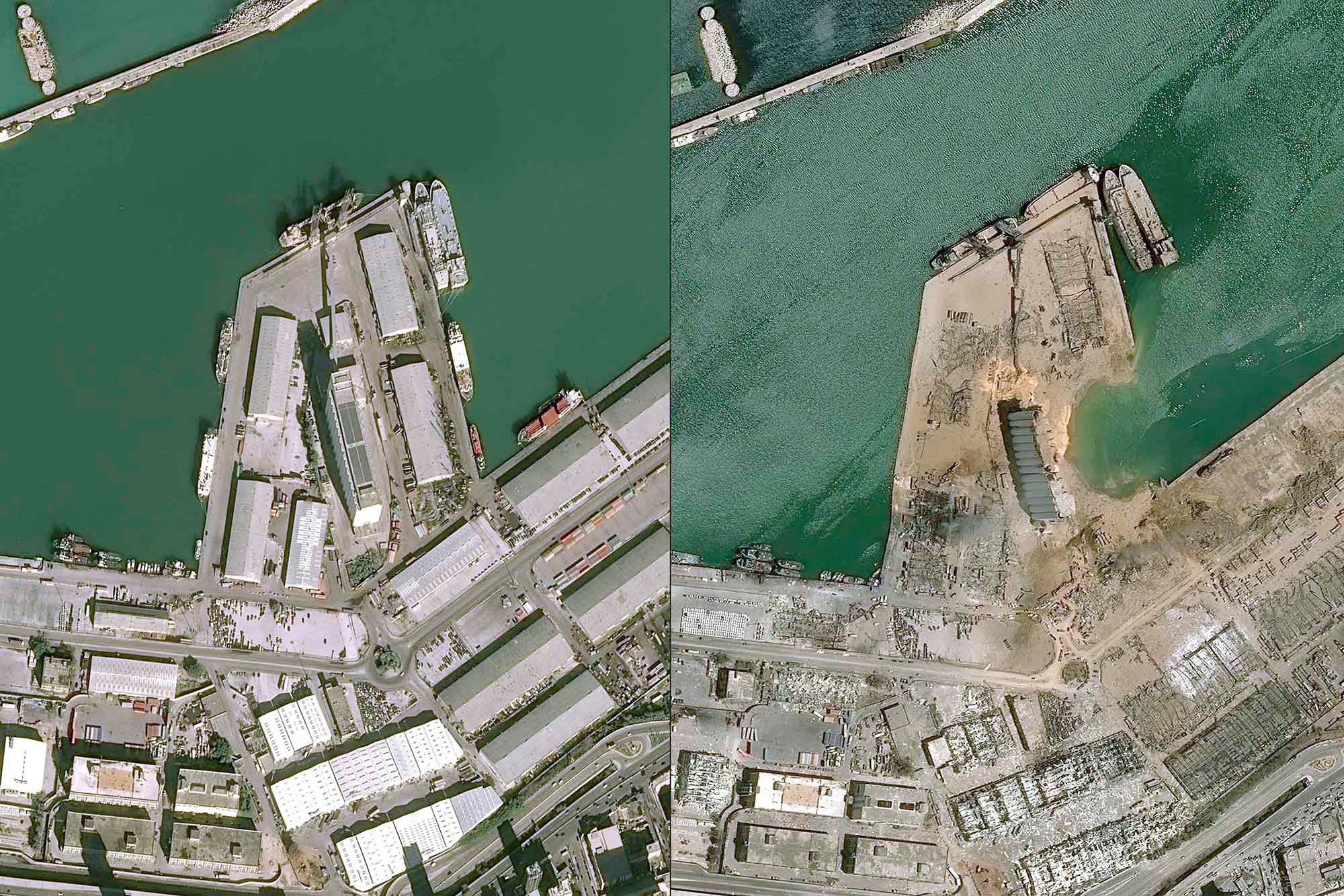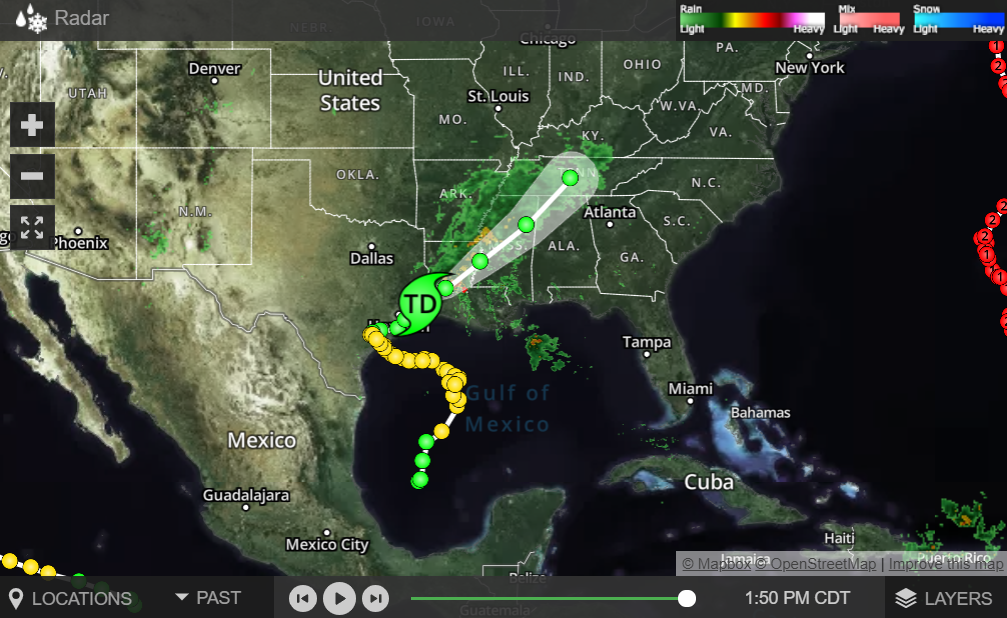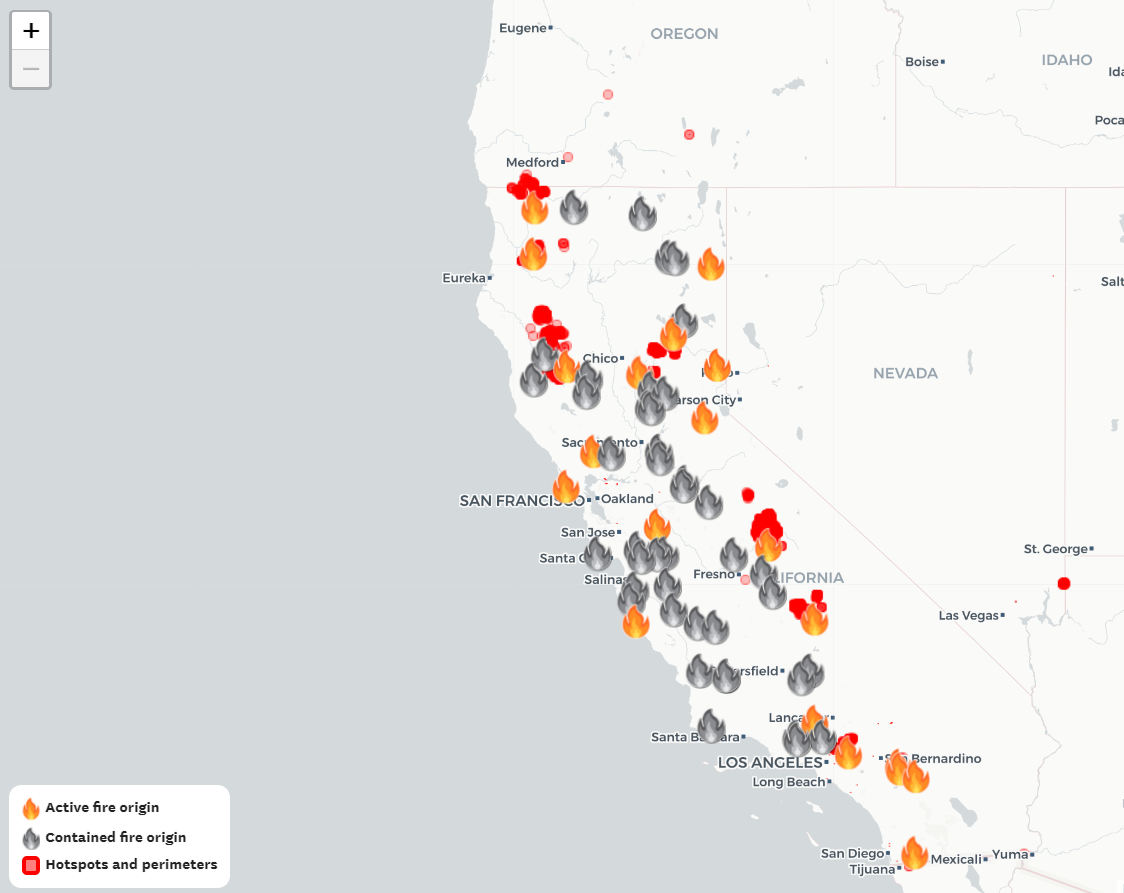As complex spatial data and GIS have grown more and more ubiquitous, so too has the public’s ability to better comprehend events happening time zones away from them. Likewise, the rise of such technology has also improved people’s ability to react when disasters strike close to home.
In August, a deadly explosion in Beirut captured the attention of the globe. Footage of the event spread rapidly over social media, but for many, understanding the magnitude of a blast in a city they have never visited was made possible with diverse visualizations like those in a New York Times article. In one image, circles representing the blast radius are overlaid on top population density data. In another, satellite imagery of the city is overlaid with data points like kinds of damage reported (from leveled buildings close to the explosion to blown-out windows miles away from its center) and other information specific to individual neighborhoods.

Image courtesy of the New York Post.
Other large-scale natural disasters, like wildfires, hurricanes, floods, landslides, and air pollution, are often difficult for individuals to truly comprehend but also necessary to react to, in both the immediate and long-term. GIS allows multiple forms of data to overlap and paint a clear picture of both the physical and socio-economic impacts of a disaster.
In the United States, the Federal Emergency Management Agency’s Hurricane Incident Journal keeps tabs on both the severity of an approaching storm and how much potential harm already-disadvantaged populations may face. National Oceanic and Atmospheric Administration (NOAA) data projecting the path of storms is conflated with data from the CDC’s Social Vulnerability Index. For 2020’s Hurricane Laura, COVID-19 case data from Johns Hopkins University was also added to that mix. The United States Army Corp of Engineers’ Flood Inundation Mapping project provides an interactive map with levels of information from stream gauges and levee information to help predict where floods may strike afterward.

Image courtesy of WDSU News.
Similar tools exist for tracking wildfires, like those currently ravaging the west coast of the US. The United States Geological Survey’s (USGS) Landfire Data Distribution Site tracks fires in real-time, as do several other non-state organizations. Advances in unmanned air vehicles and the Internet of Things have allowed for more rapid updates with less risk to humans.
Recently, Google has added data to ensure that these kinds of apps can continue to be frequently updated and rapidly accessed, meaning the tools stay useable even as demand for them increases with the advent of a disaster.
After fires burn through the vegetation that, quite literally, holds land together, landslides are a common occurrence. The United States Geological Survey (USGS) has tools to monitor those threats in real-time, including landslide monitoring and post-fire debris flows, and informational guides for understanding the maps. The USGS also provides similar tools for earthquakes. This data is created in cooperation with institutions like the Colorado School of Mines.

Image courtesy of The San Francisco Chronicle.
Of course, since this is spatial data, there are non-governmental actors providing knowledge as well. One example is PurpleAir, an air quality tracking site created using the Internet of Things, including devices you can buy on-site to monitor air around your home and contribute to the overall data. For a non-governmental live look at developing storms, Esri’s disaster response hub houses a wealth of tools.
Geospatial data continues to play a crucial role in not only tracking & responding to a natural disaster but also informing the public on the gravity of the situation. The tools and visualizations made available by geospatial data and GIS software continue to provide key insights and information for decision-makers and laypeople alike.



